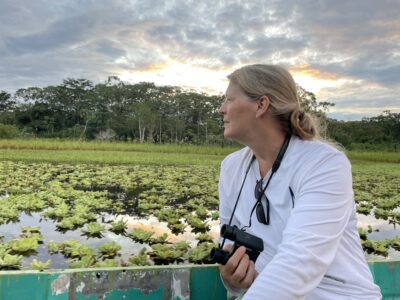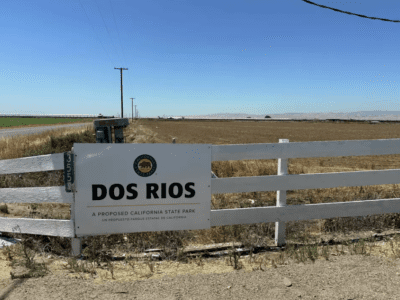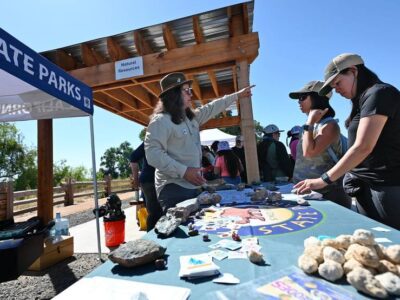
In California, the wettest winter in recent history shattered snow records and caused levees to overtop. A series of 31 atmospheric rivers between October and March caused dangerous flooding across the state. In the San Joaquin Valley, Tulare Lake has reemerged from the ancient lakebed, flooding towns and farmland. After a record-setting period of drought, the climate pendulum swung in the opposite direction.
All of that water has forced some people living near rivers to evacuate their homes. However, wildlife, such as the endangered riparian brush rabbit, don’t always have the luxury of evacuating to higher ground.
At the San Joaquin River National Wildlife Refuge near Modesto, River Partners’ allies at the U.S. Fish and Wildlife Service are leading a rescue operation to save endangered riparian brush rabbits from this year’s extreme floods.
Over the last 20 years, River Partners has restored thousands of acres of habitat within the rabbit’s range, including at the Refuge and our neighboring Dos Rios Ranch Preserve, where some of the stranded rabbits are being relocated to safety.
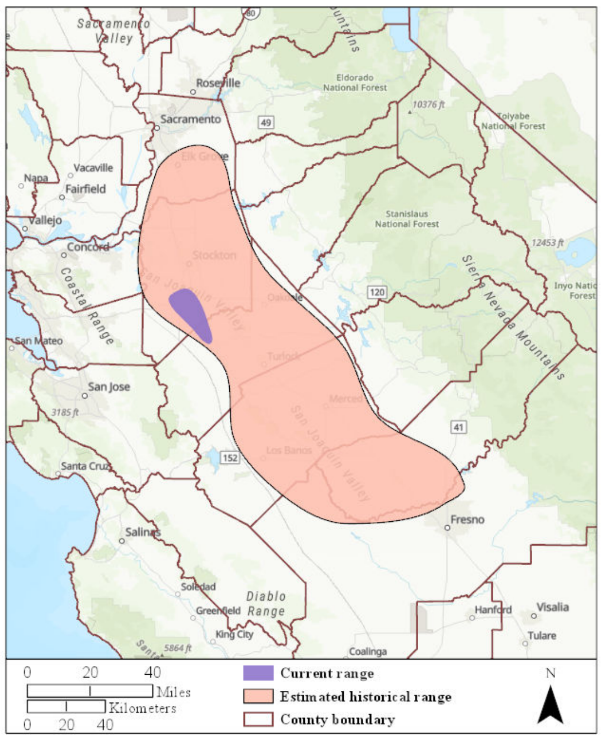
“We’re running out of places the rabbits can live that aren’t flooded,” says River Partners Restoration Ecologist Haley Mirts.
This small, adorable rabbit is native to the dense riparian forests along California’s Central Valley. Since the mid-1800s, 95% of their habitat has been lost—that’s like losing 95% of their housing market. So, when the waters rise, the rabbits have very limited options on where they can move to. Their habitat has been fragmented and redeveloped for cities, agriculture, and other human activities. They currently only reside in one area in the entire world, in the San Joaquin Valley.
A Wet Winter Puts the Riparian Brush Rabbit at Risk
At the San Joaquin River National Wildlife Refuge near Modesto, where an estimated 1,000 to 2,000 rabbits live, nearly 300 rabbits have been rescued and relocated to higher ground since January, as floodwaters engorged by the nearby San Joaquin and Tuolumne rivers and water poured into rabbit habitat.
Partners assisting the effort include River Partners, the California Department of Fish and Wildlife, and Oakland Zoo.
“We kayak and boat around, looking for rabbits in trees, placing traps in areas that will soon be underwater and moving any trapped rabbits to higher ground and restored areas,” says San Luis National Wildlife Refuge Complex Wildlife Biologist Fumika Takahashi.
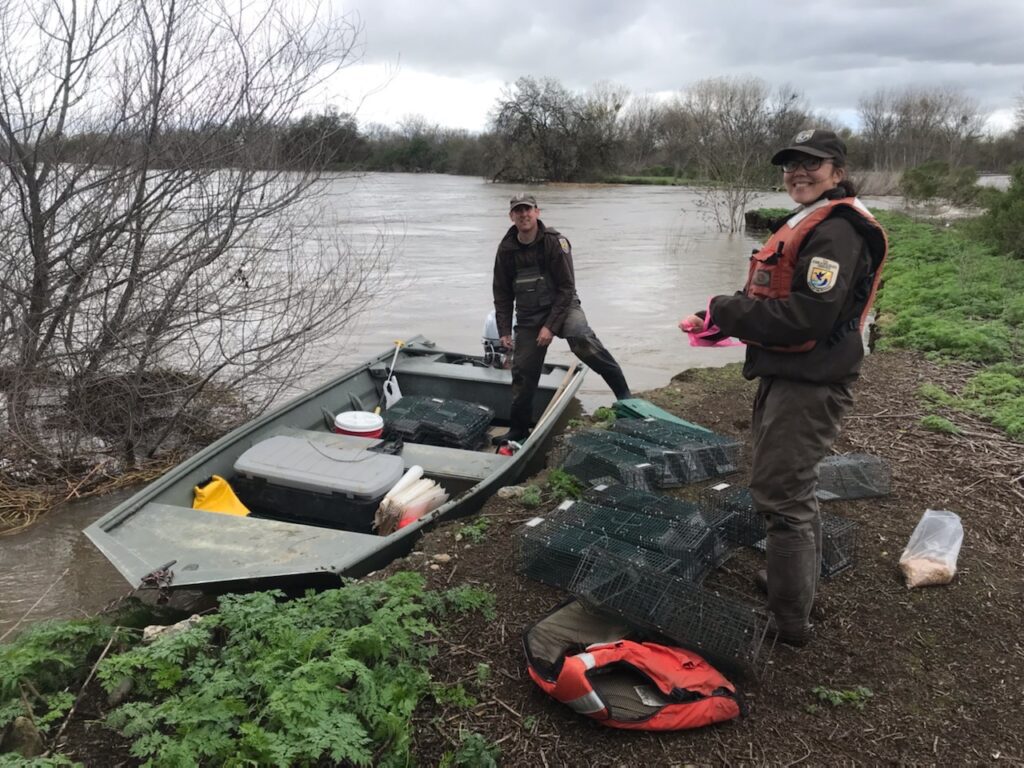
Takahashi continues, “It’s an emotional experience seeing their habitats be completely underwater. Seeing rabbits floating on logs waiting to die. You know they have survived floods before, and they certainly bounced back. But it’s incredible to think that they were able to make it.”
Legacy of Restoring Habitat Lifelines
River Partners has worked with refuge staff for more than a decade to restore rabbit habitat and give rabbits somewhere to go when floodwaters rise, both at the refuge and River Partners’ Dos Rios Ranch Preserve located across the Tuolumne River from the refuge. These “bunny berms,” as Takahashi refers to them, are elevated areas including levees planted with dense foliage to provide plenty of forage and shelter from predators for the rabbits. Rabbits are being relocated to these berms, both at the Refuge and at Dos Rios.
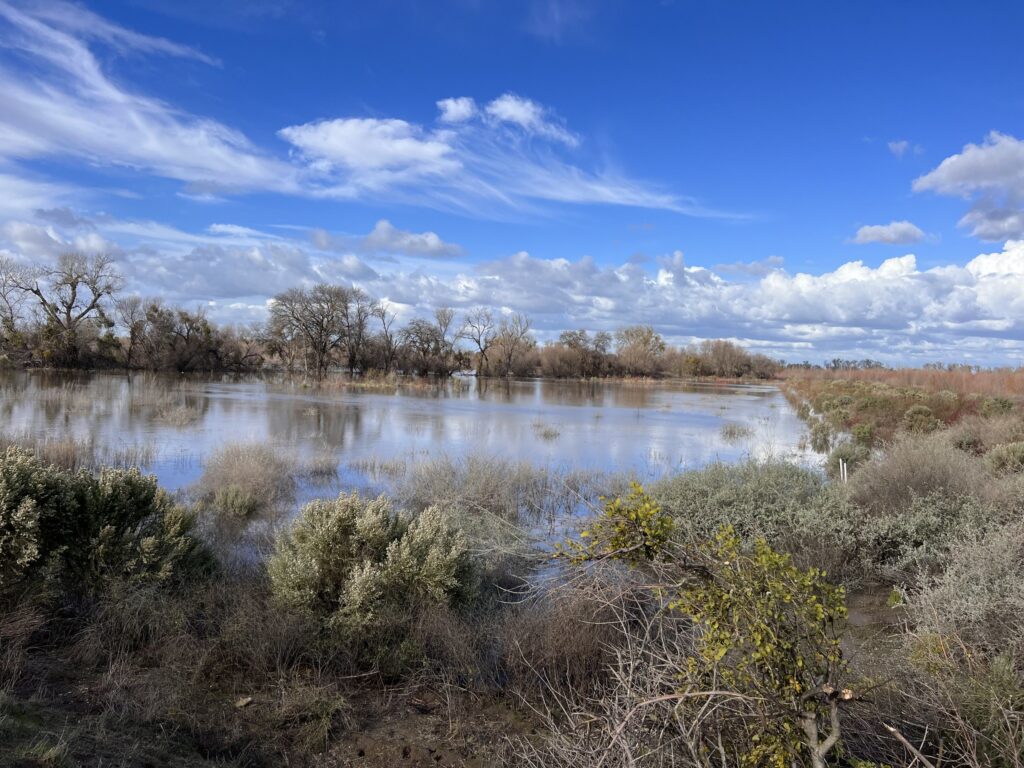
“River Partners has done a lot of tree planting,” says Takahashi. “To see those efforts benefit the rabbits directly in this flood is really cool. The habitat was there and ready for them.”
With climate change, flooding along the San Joaquin Valley rivers is expected to occur more frequently and be more damaging, and Takahashi emphasized the importance of learning from each flood to continue improving restoration efforts. During 2017 flooding, for example, rabbits were stranded on small islands of habitat for so long that they ate through the available food source. Since then, River Partners and the refuge partnered to plant more plant species on bunny berms to increase rabbit forage.
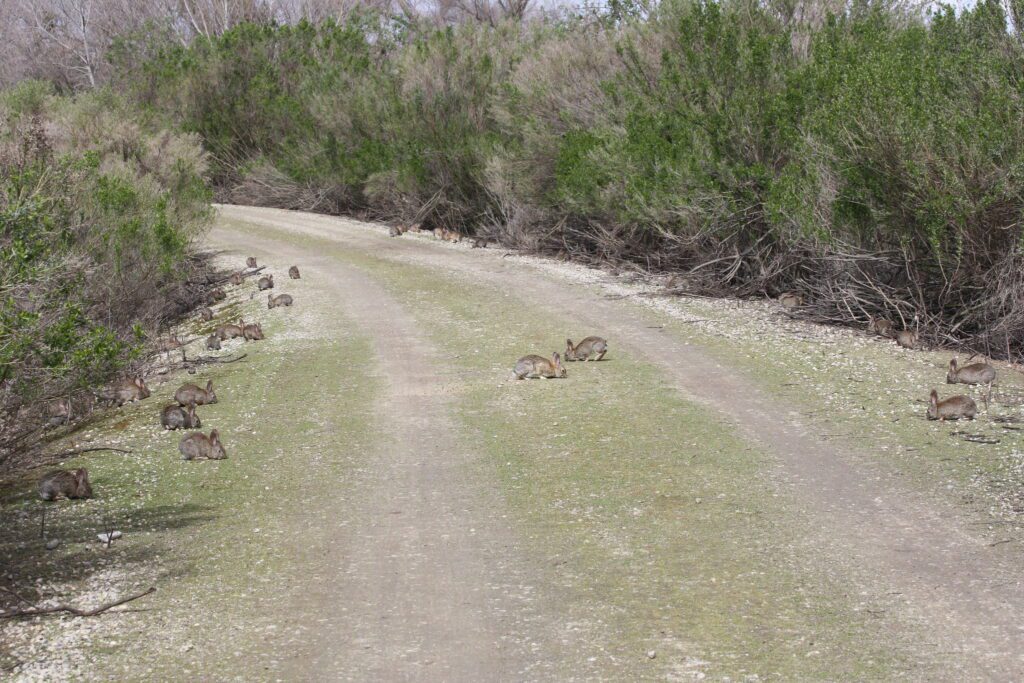
These Rabbits Can’t Catch a Break
To make matters worse, riparian brush rabbits face another major threat to their survival: a deadly, highly contagious disease known as rabbit hemorrhagic disease.
“The rabbit hemorrhagic disease has thrown another hardball at the rabbit, one more issue they’ve had to overcome,” says San Joaquin River National Wildlife Refuge Manager Eric Hopson.
Partners have been working since the disease first found its way to North America in 2020 to vaccinate riparian brush rabbits in the San Joaquin Valley to give them a fighting chance for survival as the disease spread west and north from New Mexico. The virus spreads between domestic and wild rabbit populations and is fatal in about 90% of cases.
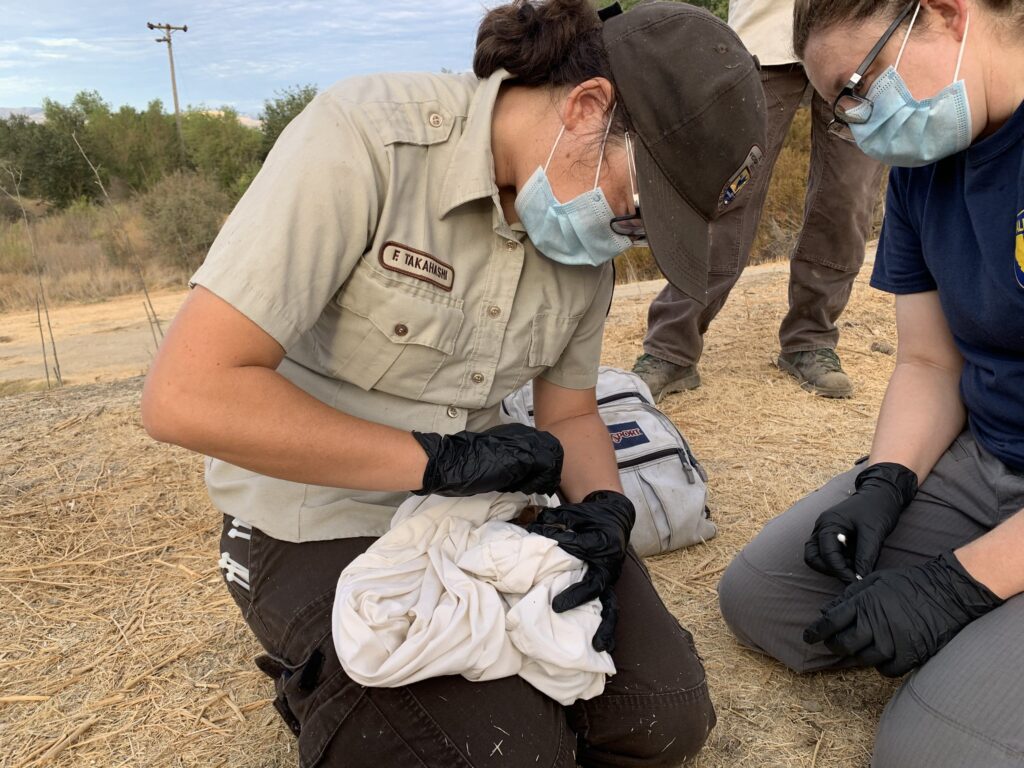
Luckily, partners were able to vaccinate a portion of the riparian brush rabbit population before the disease spread to the San Joaquin River National Wildlife Refuge and neighboring Dos Rios Ranch Preserve in May 2022.This preemptive action helped them from being wiped out entirely.
This year’s flood rescues provide an opportunity for staff to give the life-saving vaccine to the rescued rabbits and test rabbits for the disease.
“We’ve captured and relocated 286 rabbits so far during the floods. Each of those were also vaccinated,” says Takahashi. “It’s been crazy, a crazy busy time.”
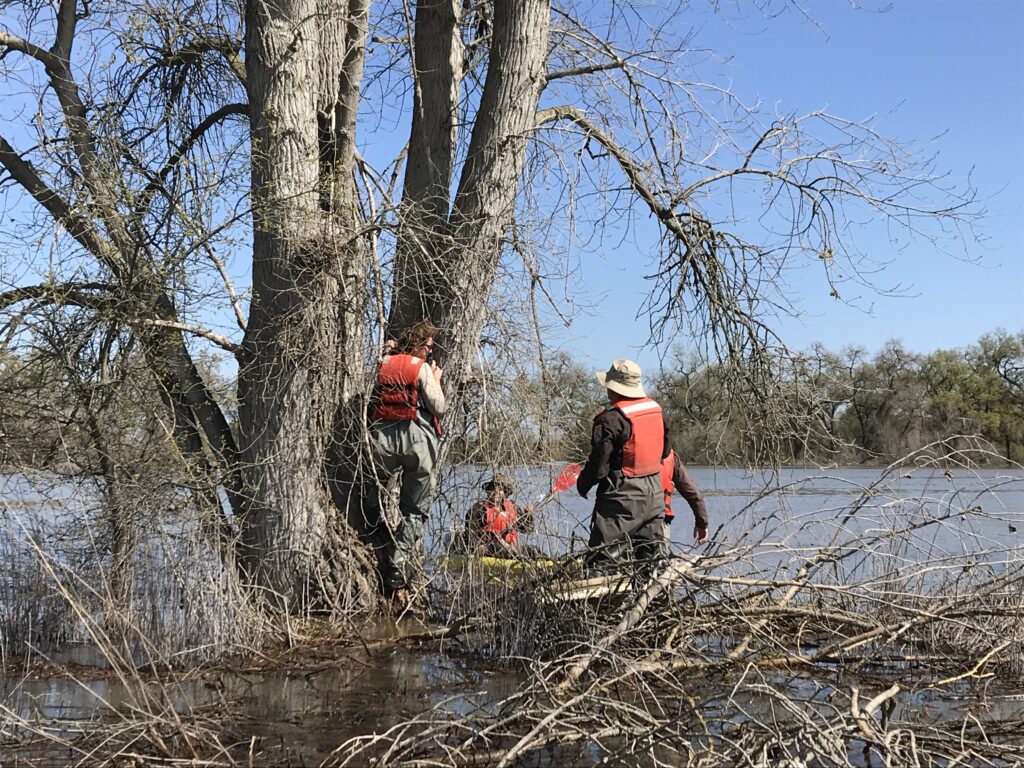
Though the challenges facing these rabbits are great, there is an incredible team of people working tirelessly on multiple strategies to provide recovery lifelines. Restoring and expanding their habitat and vaccinations are two major strategies to give them a fighting chance.
“The riparian brush rabbit is a resilient species,” says Hopson. “Their reproductive rate is high for rabbits. We have seen the populations bounce back in prior years after these fires and floods. We’re hopeful.”


